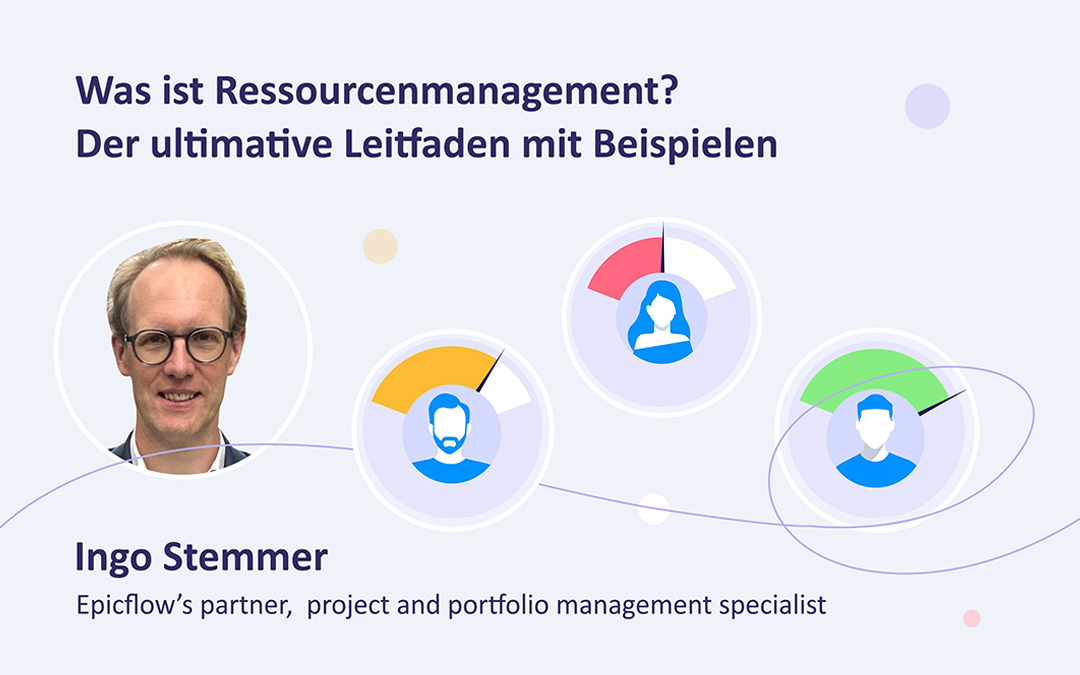
What do you need to achieve successful delivery of every project in a multi-project environment? In the flow of tasks, milestones, dependencies, resources, etc., it’s very easy to lose focus of what matters most for achieving the projects’ goals. Knowing the critical success factors can help you navigate this endless flow of multiple projects’ elements and take care of the most important things.
Read further to find out what critical success factors will take you closer to the smooth orchestration of multiple projects and facilitate achieving the desired outcomes.
Critical Success Factors: Definition and Examples
Let’s start from the basics – figuring out what critical success factors are. They are the elements of a project that are critically important for achieving a project’s goal [1]. In other words, critical success factors (CFSs) are small targets that must be hit to achieve a project’s overall success. Let’s consider an example: when a person undergoes medical treatment, the success of the endeavor will depend on the doctor’s expertise, the quality of medication, and the patient’s diligence in following the doctor’s recommendations. If one of these factors is neglected, the effectiveness of treatment will be questionable.
Each critical success factor is measured by corresponding KPIs that help a project manager keep control of them. In particular, critical success factors can be regarded as objectives, while KPIs are the actions that help achieve them.
Critical success factors shouldn’t be confused with project success criteria. The latter are the standards that are used to assess a project upon its completion – whether it has met the requirements and expectations of stakeholders, clients, and senior management.
Read more: Successful Project Delivery in Aerospace and Defense: Success Criteria
When it comes to determining the critical success factors, there isn’t a one-size-fits-all standard – they may vary depending on the business, industry, and project specificity. However, we can point out some more or less versatile CFSs:
- A project manager’s competence;
- Project team members’ competences;
- Clearly defined project goals;
- Senior management support;
- Effective planning;
- Proper risk management, etc. [2].
The above-mentioned CFSs are essential but not enough for managing a multi-project environment with a shared pool of resources. Let’s take a closer look at those that matter most for successful multi-project management.
7 Critical Factors for Successful Multi-Project Management
The main mission of multi-project management is the successful delivery of each project running in a company. What are the criteria for successful delivery?
- Accomplishing each project on time and within budget;
- Each project’s deliverable must be of the expected quality and in line with customers’ requirements.
- Delivering the projects should contribute to a business organization’s profitability.
The factors listed below will make it possible to achieve all of the objectives mentioned above.
Project and resource managers’ competencies
The research [3] published by the Project Management Institute emphasizes the role of a project manager’s expertise in the effective orchestration of multiple projects. In particular, a project manager should possess the following competencies:
- Administrative: knowledge, skills, and experience in planning, organization, and control of projects;
- Intrapersonal competencies (personal qualities): being responsible, proactive, flexible, etc.;
- Interpersonal competencies: the ability to interact effectively with project stakeholders;
- Business competencies that allow project managers to deal with the business and/or strategic sides of projects (e.g., strategic thinking, business sense, etc.);
- Technical competencies refer to the technical aspects of the project deliverable.
It’s also essential for a project manager to be able to deal with multiple dependencies and tasks effectively and manage multiple teams simultaneously.
As for resource managers, their expertise plays no less significant role in the success of multi-project management – it’s their responsibility to meet every project’s need for resources, i.e., plan them, allocate, and ensure their optimum utilization. The most essential competences for resource managers are the ability to prioritize and manage multiple tasks efficiently, analytical and critical thinking, forecasting and decision-making skills, interpersonal interaction skills, and more
Read more: The Job of a Resource Manager: Role and Responsibilities
Thorough planning
It may seem that project management involves creating myriads of plans, and preparing them is a rather time- and labor-consuming task. Some organizations confine themselves to creating financial plans, but in fact, planning a project, especially when it’s added to a multi-project environment, should involve more details than just the project budget. In addition to traditional project plans, in a multi-project environment with a shared resource pool, resource capacity planning becomes crucial – it will tell you how many employees with what skills you’ll require to complete an upcoming project with regard to team members’ involvement in current projects. It’s also critically important to plan for uncertainty. For example, when planning a project’s timeline, you can add a time buffer to a milestone or the end date – it will provide you with flexibility when you need to respond to uncertain events or changes occurring in the workflow.
Proper resource management
Wise management of shared resources is both one of the biggest challenges and an essential factor for multi-project management success. It helps business organizations utilize available resources with maximum efficiency, which contributes not only to the successful completion of all projects but also to cost optimization. The following signs indicate the effectiveness of resource management:
- Every project is staffed with required employees – this will minimize the risk of resource shortages, delays, and unbudgeted expenses;
- Each team member works on tasks that match their competence level, which increases the quality of the output;
- Employees’ capacity and availability are taken into account in the resource allocation process; they aren’t overloaded or idle, don’t turn into bottlenecks for the workflow, and their productivity is high.
Correct prioritization
The work in a multi-project environment cannot be successful without setting correct priorities, which refers to both projects and tasks. For example, when adding a new project to the environment (especially when you have several projects to start work on), you should analyze each of them in terms of their business value, expected ROI, and feasibility, and make the decision based on the results of the analysis.
As for task prioritization, it’s the main prerequisite of every team member’s fruitful work – it eliminates bad multitasking and helps them put all of their efforts into the most important assignments for the moment. Having no clear priorities, their work will be far from efficient – they can switch from one task to another trying to complete a little bit of everything or become heavily overloaded in an attempt to complete as much work as possible.
Monitoring and control of both project and resource levels
Due to dependencies between projects, regular monitoring and control of both every single project and the whole project environment gain particular importance – it helps timely detect issues and take timely measures to improve things. But what is even more essential in a multi-project setting is tracking resource performance. As a rule, project managers focus on assessing the progress of projects. But in fact, resource performance is the primary thing they should monitor. Proper resource performance is the basis for a smooth project flow, and if there are any issues at the resource level, they will be later reflected at the project level too. For example, if one employee hasn’t coped with the assigned tasks, it will affect their teammates’ work like a domino effect, and a project manager will see a delay at the project level. Accordingly, if this bottleneck resource is timely detected, this delay can be avoided. This is why, monitoring resource performance is of primary importance.
Risk management
Risk management involves a thorough analysis of the events that can have either positive or negative effect on a project. Therefore, it’s up to a project manager to review every possible event and plan responses to each of them. As a result of proper risk management, the probability of negative events decreases, the project won’t go off the rails if they occur, and the whole project environment will be out of danger.
Read more: Project Risk Management: Importance, Challenging Issues, Recommendations
Leveraging the right software
Finally, the right software solution can facilitate achieving success in multi-project management. It’s a good idea to select a solution intended specifically for managing multiple projects and resources. For example, Epicflow has all the necessary tools to address the complexity of multi-project management. With its powerful features, you can:
- Prioritize tasks across the whole project environment for the team members’ fruitful work on project tasks;
- Assign resources to tasks with regard to team members’ capacity, availability, and competences;
- Forecast future resource capacity which will help you plan resources and ensure their balanced workload;
- Run simulations to make data-driven management decisions;
- Have a comprehensive view of the state of every project and the whole project environment, which will help you keep all projects on track;
- Analyze resource performance to prevent/identify bottlenecks, and the list goes on.
In addition, Epciflow is a flexible solution that helps project and resource managers respond to changes and uncertainty in the most efficient way.
Schedule a call with our specialists to get a full picture of Epicflow’s contribution to multi-project management success.
References
- Critical Success Factors in Project Management. PRINCE2. Retrieved from: https://www.prince2.com/pl/blog/critical-success-factors
- Alexandrova, M., Ivanova, L. (2013). Critical Success Factors of Project Management. Empirical Evidence from Programmes Supported by EU Programmes. 9th International ASECU Conference “Systemic Economic Crisis: Current Issues and Perspectives. Retrieved from: https://www.researchgate.net/publication/259909062_CRITICAL_SUCCESS_FACTORS_OF_PROJECT_MANAGEMENT_EMPIRICAL_EVIDENCE_FROM_PROJECTS_SUPPORTED_BY_EU_PROGRAMMES
- Patanakul, P. (2010). Key drivers to the effectiveness in managing multiple projects: an empirical investigation in an IT organization of a large financial institution. Paper presented at PMI® Research Conference: Defining the Future of Project Management, Washington, DC. Newtown Square, PA: Project Management Institute. Retrieved from: https://www.pmi.org/learning/library/effectiveness-factors-multiple-project-management-6465








